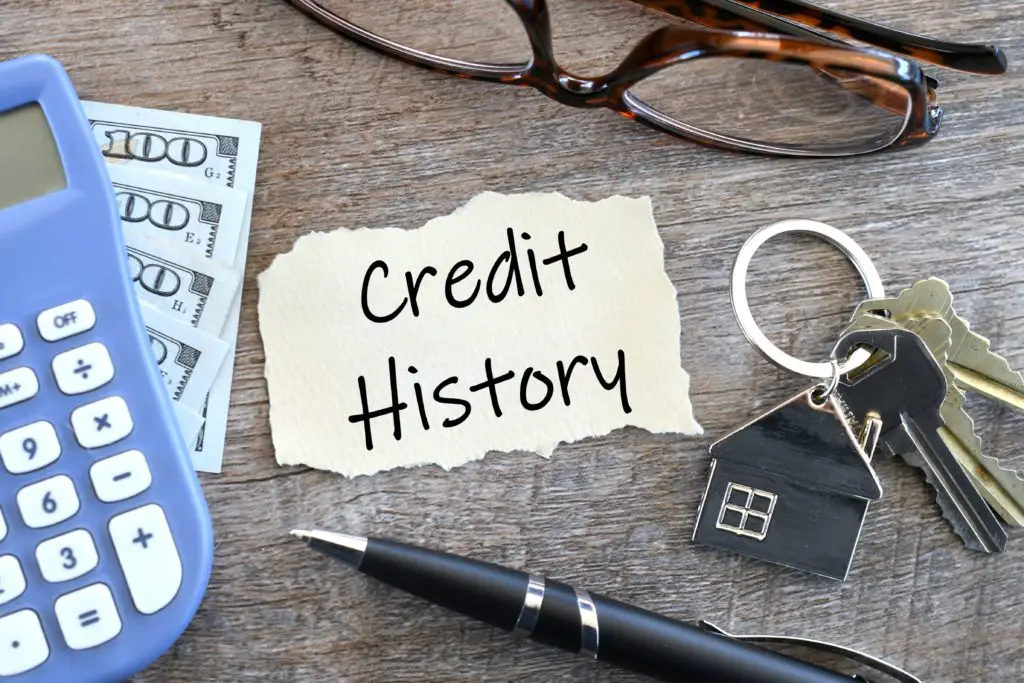How Credit Score Is Calculated? – Learn How The Credit Bureaus Determine Your Rating
If you plan on applying for a new credit card or loan, you are probably familiar with the credit score concept. It’s a number that determines your creditworthiness and the risk that lenders take when approving the loan.
However, knowing how it’s calculated is a whole other thing, and it might even help you improve your rating!
If you are curious about the factors which credit bureaus use to determine your credit score, you’ve come to the right place – we’ll go over the credit scoring models, determining factors, and the methodology behind credit score calculation!
Credit Scoring Models Explained
If you are just a regular consumer, chances are that you’ve only heard of the FICO score before. Most lenders consider FICO scores for loan approvals as the primary credit scoring model, and it was developed by the Fair Isaac Corporation back in 1989.

Still, there are other credit scoring models, and VantageScore is also often used by lenders. This system was developed by the three credit bureaus in a joint effort to create a scoring model that slightly differs from the FICO score in some scoring criteria.
While a FICO credit score ranges from 300 to 850, earlier versions of VantageScore included a range from 501 to 990, while its range is now closer to the FICO credit score scale. The main difference between the two is the scoring system since VantageScore relies on payment history as a crucial factor.
So, let’s see what are the main factors that define how your credit score is calculated for a FICO credit score, and we’ll compare the VantageScore credit score factors afterward!
Factors That Affect Your FICO Credit Score
Keeping a good credit score should be a top priority for personal finances and the best way to do it is to know the factors that a credit reporting agency uses to determine your FICO credit score. The three national credit bureaus consider a certain set of factors that indicate your creditworthiness, and here’s how it works for FICO score calculations:
- Payment history – 35%
- Credit utilization ratio- 30%
- Credit history – 15%
- New Credit – 10%
- Credit Mix – 10%
These factors help the credit bureaus form your credit score altogether. Whether you plan on applying for auto loans, installment loans, or mortgage loans, boosting each of these factors just a bit might get your credit score to an optimal level.
That’s why you need to care for every single item regardless of the percentage in which they influence your rating. Let’s go over each one to give you a better perspective on how you can improve them, and get your FICO scores boosted!
How Payment History Affects Your Credit Scores
To get your credit score calculated, credit bureaus first consider your payment history. It’s easy to assume why this is the factor that influences your FICO score the most since late payments can be seen on your credit report.
On the other hand, a history of timely payments sends a message to lenders that you can responsibly pay off any debt within the given time frame. Even a single missed bill payment can stick on your credit report for up to 7 years. However, you might be able to avoid the negative mark on your report if you are never late for more than 30 days past the payment due date, or what is called the “grace period.”
So, making timely payments should be your top priority if you wish to maintain a high FICO score.
Also, the number of credit accounts with missed payments can be crucial for your credit scores, as it’s always better to have just one account with late payments if possible.
Even if you bring the accounts current, the negative mark for missing a payment might still stick on your report for 7 years. What’s the easiest fix, you might ask?
Since it’s such a long-lasting negative mark, you should prevent being late with the bill payments if possible, and never miss the original due dates. And definitely pay within 30 days of the due date.
If it is just a one time thing that you forgot about, you can always try to send a goodwill letter to have the bad mark removed.
The Influence Of Credit Utilization
Your utilization ratio shows the amount of your available credit that you are currently using against your overall available credit. The credit bureaus consider it for your FICO rating since a borrower that uses a small portion of revolving credit seems more reliable than one that uses over 50% or even more.
It’s a signal to lenders that your personal finances might not be in the best place currently, and that you are relying on your available credit to fix the situation. It’s recommended to keep the utilization below 30% of your total available credit, which is easy to remember since it’s also the percentage in which this factor influences your total FICO rating.
Luckily, there’s a way you can keep your utilization low for the sake of having a positive FICO score, without having to lower your spending too much. By increasing your credit limit, the amount of revolving credit at your disposal also raises, so it should be easier to keep the utilization low.
Still, even if the credit card issuers allow this raise, you should be responsible for your limit since any unnecessary expense might increase your utilization, lowering your FICO score.
Credit History – What’s The Catch?
Let’s consider this potential for a bit – you’ve successfully paid off a credit card and you consider closing the credit account since it’s one of your oldest ones? It could be the worst possible choice for your FICO score, since keeping old accounts active can actually boost your rating!

Look at it this way – by taking a look into your older accounts, lenders can make sure that you have a long history of making timely payments. So, make sure to keep old credit accounts active to establish a lengthy history of credit, and to demonstrate your responsibility to the lenders.
Applying For New Credit
Keeping your old accounts active benefits your credit history, but who said anything about restrictions against opening new accounts? Of course, making too many credit card inquiries in a short period could negatively reflect your credit score, but getting approved for new credit can be quite beneficial.
It accounts for 10% of your FICO credit score and is somewhat connected to the length of your credit history. So, if you’ve closed your old accounts, and that resulted in shortening your history, sending too many loan applications can only further hurt your score.
On the other hand, if you have a long credit history and just got a new credit approved, it will help raise your credit score since lenders can see that you got the loan without having to send too many inquiries.
The Relevance Of Credit Mix
Your credit report doesn’t only include bill payments – it’s a mix of different credit repayments that you’ve made over the years. So, you can guess that having a diverse credit mix is a good thing for your credit report, and it contributes 10% to your overall FICO credit score calculation.
It doesn’t mean you should have at least one loan from every type of credit – you just need to have more than one type of loan approved. Of course, too much debt is never a good thing, but if you have an auto loan, installment loans, and mortgage loans at the same time, your credit mix will showcase that you can deal with each with timely payments.
This way, the lenders can see that you can responsibly pay off each loan from the mix, and that’s what makes the credit bureaus include this factor into your overall score calculation.
How Does VantageScore Work?
Credit score calculations work a bit differently with VantageScore, but this scoring model still relies mostly on the same factors. The main difference is the influence of payment history since it affects your credit rating by 40% when compared to 35% in a FICO score model.
Also, the utilization only contributes 20% here, and your balances and available credit fill up the gap. Here’s how it looks in terms of percentage when it comes to VantageScore determining factors:
- Payment history – 40%
- Utilization – 20%
- Balances – 11%
- Available credit – 3%
- Depth of credit – 21%
- Recent inquiries – 5%
When you look at it, the two scoring models aren’t that different, but you shouldn’t be surprised to see your VantageScore featuring a different rating than your FICO score in case the lender relies on this scoring model.
Final Thoughts
Hopefully, this guide can shed some light on how the bureaus calculate your credit scores. Regardless of the model, you can make sure that your credit rating remains the highest it can be by making on-time payments and keeping your accounts current.
It’s also possible to see any potential negative marks by requesting a free copy of your credit report from each of the bureaus. With that being said, you are now prepared to maintain your credit scores on the highest possible level, whether it’s a FICO or VantageScore model!
Frequently Asked Questions (FAQ):
What’s a good credit score level?
If you wish to have the highest chance of loan approval, your credit score should be in the range above FICO 740. A good VantageScore range is considered to be between 661 and 780.
Can I calculate my credit score myself?
Credit bureaus use credit scoring models that include all the listings from your reports in terms of payment history, utilization ratio, loan applications, accounts, and credit mix. So, it’s almost impossible to calculate your score yourself, but you can check your credit scores frequently by reaching out to the bureaus.
How often are credit scores calculated?
The bureaus update your credit scores usually every 45 days or less. It’s sometimes updated more often if you have recent loan inquiries and the lenders submit the information to the bureaus.
Which factor affects my credit score the most?
Payment history accounts for 35% of your FICO score and 40% of your total credit score in the VantageScore model. However, all the contributing factors are considered together by the bureaus, so you should also pay attention to your available credit usage, credit history length, new applications, and the types of credit in your mix.



